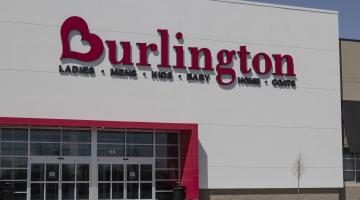
NRF's Top 100 Retailers ranks the industry’s largest companies according to sales.
View the complete chart.
For a year that included so much upheaval in retail, the National Retail Federation’s Top 100 Retailers list remained relatively stable. Walmart continues at the top, where it has been comfortably ensconced. Amazon remains in second place.
The Top 100 roster is based on sales rankings for 2020. While pandemic-related lockdowns negatively impacted some retailers, others were able to benefit: Grocers like Publix, Aldi and H-E-B all moved up in the rankings, as did The Home Depot and Target. Those taking a hit included retailers like TJX Companies and Macy’s.
“Companies that invested heavily in buy online, pick up in store in 2018 and 2019 were losing money on it then,” says David Marcotte, senior vice president for Kantar. “In 2020, it all paid off. If you didn’t have that capability, you had to scramble to build it.”
Retail investments in ecommerce have slowed since, but Marcotte says that’s because some companies already had invested heavily and can now pull back a bit. “Look at Walmart, which had growth of 40 percent online, and Best Buy — almost 50 percent of their sales last year were online. They never thought they’d say that.”
The last year or so has brought plenty of incredulity — even among economists. “Our economists refer to 2021 as the upside-down year,” Marcotte says. “Everything you thought you knew, you don’t. It’s not 2020, where everything was confusing.”
While two years of upheaval can make it difficult to find a baseline going forward, the stability within the Top 100 isn’t surprising to Marcotte. “The companies don’t move that quickly,” he says. “That’s the reality.”
Still, some themes emerged and Marcotte is quick to offer a reminder that the data for the Top 100 includes sales figures from 2020, which doesn’t reflect some major storylines that have occurred since. “There are a number of mergers and acquisitions that occurred at a large scale that have not been realized fully in the numbers.”
Staying power
While it’s impossible to talk about 2020 without including the impact of the pandemic, Walmart’s staying power atop the Top 100 list is worth nothing.
“Walmart came up through the ecosystem of retail with winning combinations, such as putting stores where other stores aren’t and being the valued retailer for mass retail,” Marcotte says.
Walmart’s ecommerce growth is also worth mentioning, he says. “They are the other online choice now, which is a big change. It’s really Amazon and Walmart.com, with Best Buy.com and Target.com also coming up. Walmart.com is nowhere as large as Amazon, but it is a legitimate alternative, one that nontraditional Walmart shoppers are checking out.”
Walmart continues to expand in this area, including a June announcement that it was investing in DroneUp. The two companies initially had partnered on drone delivery of COVID-19 self-collection kits.
Top 100 ecommerce winners are expanding their online assortments well beyond what they can carry in-store, as well. Marcotte points to Best Buy, which announced an enlarged summer lineup to include grills and luggage.
Best Buy is hardly alone in this. “What we’re seeing repeatedly is retailers are treating online as both an opportunity to carry a larger portfolio at less cost and in some cases to appeal to a broader audience than they do in-store,” he said.
Winners and losers
Of course, not every retailer soared in 2020. Working from home meant less of a need for apparel and makeup. Sephora saw its revenues drop more than 15 percent, while Ulta Salon, Cosmetics and Fragrance was down 16.8 percent.
The impact on apparel depended on category. Lululemon was up almost 20 percent, thanks to the dramatic increase in athleisure as the new workwear. Department stores struggled mightily, with Belk, Dillard’s, Macy’s and J.C. Penney Company down around 30 percent. Nordstrom saw a slightly more significant dip of 35 percent, while Sears Holdings dropped almost in half.
"The survivors are going to be interesting to watch as they look to readjust their businesses. It’s going to require agility."
David Marcotte, SVP of Kantar
But department stores are repositioning for 2021, Marcotte says. “The survivors are going to be interesting to watch as they look to readjust their businesses. It’s going to require agility. Kohl’s and Macy’s have always been a great place to get luggage, and right now, everyone wants to travel, but they can’t find luggage. They’re investing heavily in that and merchandising travel.”
Being at home meant we were more aware of shortcomings and needs in our domiciles. So, we bought furniture and other home goods. Wayfair saw its sales increase by 54.6 percent, followed by Amazon, which grew by 33.7 percent. Tractor Supply Company (26.8 percent), Ace Hardware (25.5 percent), Lowe’s Companies (23.8 percent) and The Home Depot (21.3 percent) had some of the largest growth in 2020.
Shifting consumer expectations
Speaking broadly of consumers, Marcotte notes they are not as sensitive to pricing and promotion. “While they are seeing a lot less promotion these days, they exhibit a tendency to trade sideways or up. Normally we’d expect them to trade down.”
They also are less likely than before to be concerned by low stock, he believes. “Two or three years ago, it would bother them to find holes on the shelves,” he says. “These days, they’ve been pretty well trained to expect that.”
Whether that grace has staying power remains to be seen. Now nearly 18 months into the pandemic, it is unclear what behaviors will change forever. “There were so many disruptions to life rhythms, habits and routines that we’re still seeing this year,” Marcotte says. “We haven’t seen schools starting back up yet. That’s another huge routine shift. I’m waiting to see what the impact of that is.”
One thing is clear to Marcotte: Retailers need to “express a different value than last year. Last year it was, ‘We’re open, and we have stuff.’ This year it is, ‘We’re open, we’re a good place to go and we have people who can answer your questions.’ That is much harder and expensive to execute on.”
While 2020 was a huge year for grocery, that pattern also is starting to shift, especially as restaurants reopen. “In 2020, all meals happened in the house,” he says. “Now, it’s more binary: Do we go out or do we stay in and prepare something?”
Major grocery chains hold six of the top 20 spots in the Top 100 and most saw sales increases in the double digits. Marcotte does not believe that will continue in 2021, particularly as shoppers have more options of where to spend their money.
“They had a tremendous year last year,” he says. “They’re wondering when the downside happens this year. It can’t keep going up. People have more places to spend their money and the wallet share competition that you get into is going to be coming back into play.”
Still, with the relative health of the companies, he anticipates potential mergers in this area. “A lot of healthy companies are trying to buy other healthy companies, which we just saw with 7-Eleven buying Speedway and Chedraui purchasing Smart & Final,” Marcotte says. “That is something worth watching.”
Uncertainty ahead
No matter where a company ranks on the Top 100 and no matter what 2020 held, there is no certainty for holding onto that share in 2021, Marcotte says. Logistics and supply chain issues will be the major factor in a retailer’s staying power, he believes.
While 2020 was the year of the toilet paper shortage, 2021 cuts a much broader swath with thousands of products impacted. “These shortages are much worse than what you’re picking up here and there in the news,” he says. “I’m not sure where it’s all going to go. Every single direction I look is concerning.”
"The bottom line for retailers is they have to succeed in an up-and-down market. They don’t have a choice. Being flexible is very much part of that expertise that we see in the Top 100."
David Marcotte, SVP of Kantar
While the chlorine shortage has been a story as pool season opens, he notes the trickle down. “Without chlorine, you can’t make plastics and you can’t get adhesives. And without those, you can’t create many products and packaging. There are a lot of shortages that are literally falling outward and will continue to impact things for the next year.”
It may mean retraining software to accept alternative products, because those who win in 2021 will be those who have “extreme agility and flexibility,” Marcotte says.
One bright spot for global retail is that operating margins are “way up,” he says. Those will be impacted throughout the year by increasing logistics costs and potential price sensitivity.
“Everybody has this issue and that will start changing some of this conversation. We all know that when gas goes above $3 a gallon, people change the way they buy gas. We don’t know where that point is in overall retail at the moment.”
While 2020 may have proven to be a fairly solid year for most of retailers — with 70 percent of the Top 100 posting some level of sales increase — the future remains uncertain.
“Everybody in retail is scrambling to find products and to communicate that to shoppers: ‘We may not have what you’re looking for, but we’ll have what you need.’ The bottom line for retailers is they have to succeed in an up-and-down market,” Marcotte says. “They don’t have a choice. Being flexible is very much part of that expertise that we see in the Top 100.”


